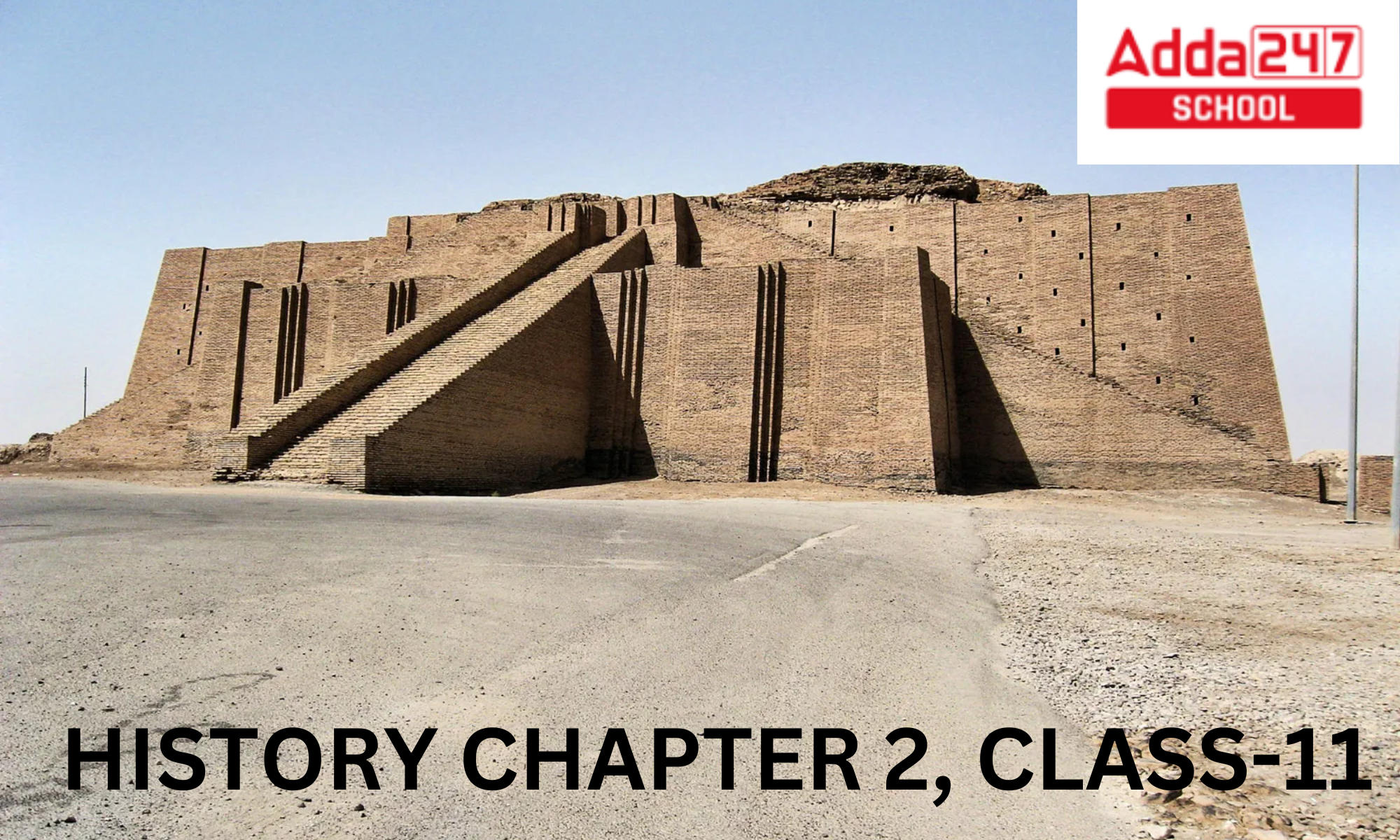Table of Contents
NCERT Solutions for Class 11 History Chapter 2- Writing and City Life
We will see the development of a powerful civilisation in Mesopotamia in this chapter 2 of the Class 11 history NCERT book. Along with the literature and artwork of the Mesopotamian culture, we will also learn about the significance of temples in Mesopotamian history. Two rivers round the region known as Mesopotamia. The Greek words “Mesos,” which means middle, and “Potamos,” which means river, are combined to form the word.
Iraq is a country with a range of ecologies. The northeast’s verdant, undulating plains ultimately give way to forested mountain ranges with clear streams and wild flowers that receive enough rainfall to allow crop growth. There is more to cities and towns than merely being crowded with people. People should only assemble in towns when the economy becomes more diverse than just the production of food.
Class 11 History NCERT Chapter 2 Notes- Writing and City Life
NCERT Solutions for Class 11 History Chapter 2- Writing and City Life- Video of MCQs
NCERT Solutions Class 11 History Chapter 2- Writing and City Life- Solutions PDF
To Download the pdf of Class 11 History NCERT Solutions of Chapter 2, click below.
NCERT Solutions for Class 11 History Chapter 2- Writing and City Life
NCERT Solutions for Class 11 History Chapter 2- Writing and City Life- Questions and Answers
Answer in Brief
1. Why do we say that it was not natural fertility and high levels of food production that were the causes of early urbanization?
Ans. It is frequently asserted that early urbanisation was a result of natural fertility and abundant food production. It is for the reasons listed below:
- Agriculture and steady life are encouraged by natural fertility.
- It made animal husbandry possible.
- The soil’s fertility proved beneficial when starting new professions.
- Another key driver of urbanisation is thriving trade and commerce.
- The advancement of writing and administrative skills was crucial to the growth of urbanisation.
2. Which of the following were necessary conditions and which the causes, of early urbanisation, and which would you say were the outcome of the
growth of cities:
(a) highly productive agriculture, (b) water transport, (c) the lack of metal and stone, (d) the division of labour, (e) the use of seals, (f) the military power of kings that made labour compulsory?
Ans. Necessary conditions for urbanization: (a) Highly productive agriculture, (b) Water transport, (d) the division of labor
Causes of early urbanization: (c) lack of metal and stones, (e)The use of the seals, (f) The military power of the kings made labor compulsory.
The development of an effective transportation system, trade, and services can be seen as a result of the expansion of urban areas.
3. Why were mobile animal herders not necessarily a threat to town life?
Ans. It was necessary for travelling animal herders to trade ghee, metal equipment, oats, etc. and hence therefore, they necessarily posed no significant threat to town life.
4. Why would the early temple have been much like a house?
Ans. At specific locations in their villages, the earliest settlers started to construct temples. An unbaked brick shrine served as the first known temple. Due to its diminutive size, the early temples resembled houses more than anything else. There once was an open courtyard with rooms built around it. The homes of different gods were temples. No other building has ever had an exterior wall that periodically goes in and out like temples do.
Answer in a Short Essay
5. Of the new institutions that came into being once city life had begun, which would have depended on the initiative of the king?
Ans. The new institutions that emerged with the advent of city life included the temple, trade, seal-making, sculpture, and the literary arts. The king’s initiative was necessary for these institutions to function. At specific locations in their settlements, the earliest settlers, whose origins are unclear, started to erect and demolish temples. An unbaked brick shrine served as the first known temple. Temples served as the homes of several different deities, including the Moon God of Ur and Inanna, the Goddess of Love and War. Brick temples grew in size throughout time, containing a number of rooms arranged around outside courtyards.
6. What do ancient stories tell us about the civilisation of Mesopotamia?
Ans. Assurbanipal (668–627 BCE), the last of the great Assyrian kings who had immigrated, amassed a library at his capital, Nineveh in the north. The great Assyrian monarchs, who had immigrated, recognised Babylonia in the south as the centre of high culture. He put a lot of work into collecting tablets on hymns, poetry, history, epics, astrology, and literature about omens. His scribes were sent south to locate antiquated tablets. Mesopotamian legends from long ago are excellent sources of knowledge. According to legend, Mesopotamia is sandwiched between the Euphrates and Tigris rivers. One of its time’s most sophisticated civilizations was Mesopotamia. There were three classes in its society: the upper class, the middle class, and the lowest class.
NCERT Solutions for Class 11 History Chapter 2- Writing and City Life- FAQs
What do you mean by Mesopotamia Class 11?
Mesopotamia means the area between rivers. In a valley between two rivers, Mesopotamia first appeared. These were the Euphrates and Tigris rivers. In actuality, the Greek phrase for Mesopotamia means “the place between rivers.” Mesopotamia is not a country but rather the area between these rivers.
What is writing and city life?
The relationship between urban life, commerce, and writing is shown in a lengthy Sumerian epic poem about Enmerkar, one of Uruk’s first kings. Uruk was the ideal city in Mesopotamian history and was frequently referred to as The City.
What is Uruk Class 11?
The ancient city of Uruk served as Mesopotamia’s or Sumerian civilization’s first urban centre. It is widely recognised for both its temples and its devotion to religion. Unbaked bricks were used to construct the oldest temples, which had a central courtyard and chambers on either side.
What are 3 nicknames for Mesopotamia?
Many people refer to Mesopotamia as “The Fertile Crescent” or “The Cradle of Civilization.” “The Land Between the Rivers” is another name for Mesopotamia. In actuality, Mesopotamia literally means “the area between the rivers” and is taken from ancient Greek.


 MP Board 5th Class Result 2024 Out, Chec...
MP Board 5th Class Result 2024 Out, Chec...
 MP Board 8th Class Topper List 2024 Out,...
MP Board 8th Class Topper List 2024 Out,...
 TS Inter Results 2024- Manabadi 1st, 2nd...
TS Inter Results 2024- Manabadi 1st, 2nd...














